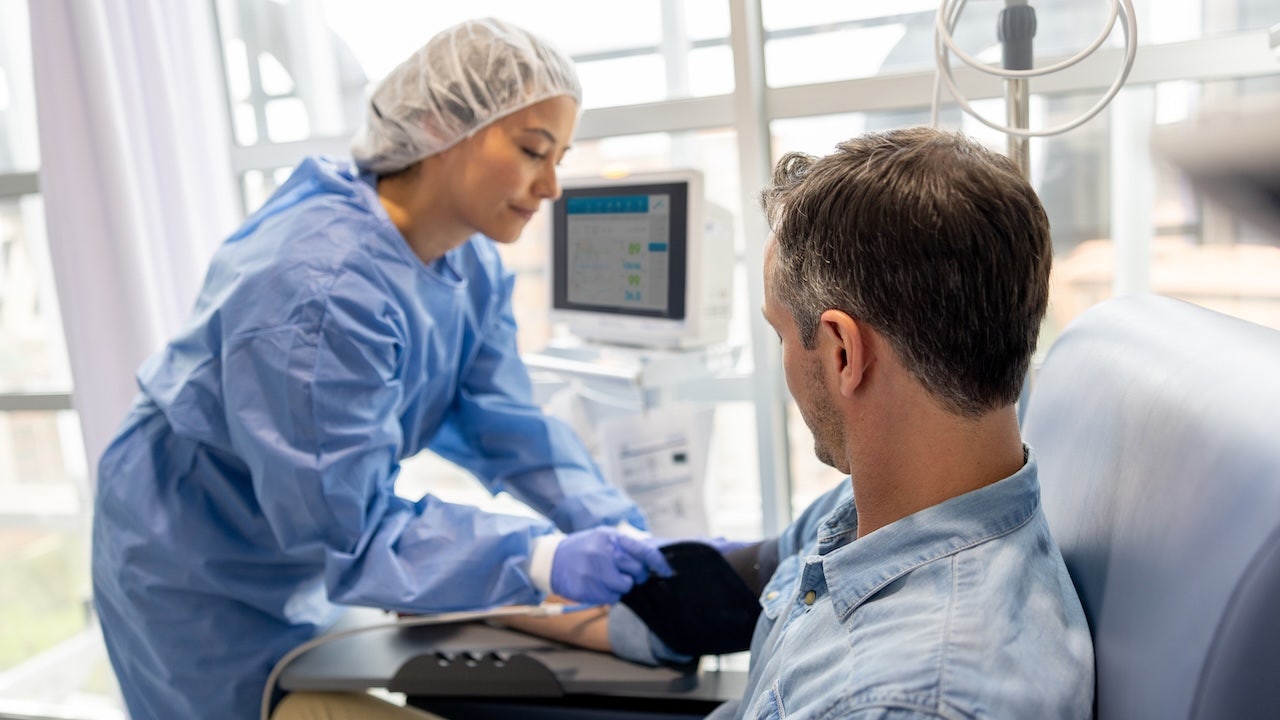She has a high breast cancer risk but has to wait years for preventive surgery

An Ottawa woman says she’s frustrated, angry and afraid as she faces a growing wait for a procedure that could spare her from the high risk of breast cancer she faces.
Ashley Ricks, 32, has been assessed as having a greater than 25 per cent chance of developing breast cancer through genetic testing and a medical assessment taking into account her family’s cancer history.
Even with her risk identified and the support of her doctor, she’s struggling to get the follow up care she wants – a preventive double mastectomy.
“While I’m waiting for the surgery, the thoughts keep rolling in my head: Am I going to get it? How long is this going to take? How certain is this going to be? And it’s scary,” Ricks said in her south Ottawa home.
Ricks also has fibrocystic breasts – which cause pain, swelling and lumps. The condition has required biopsies, a procedure to end bleeding from her nipples and led to her seeking genetic risk screening after speaking with her doctor.
Ricks showed CBC News messages from The Ottawa Hospital where the estimated wait time for her double-mastectomy increased from one to two years in February to two to three years in August.
She said she understands she’s not as high as a priority as people battling cancer, but said she feels like the pandemic has broken the health system.
“Enough is enough. I’m not asking to go ahead of someone … who has active cancer, by any means, no. But living like this in pain daily isn’t right,” she said.
“The fact that I can’t hug my kids at times isn’t fair to me either.”
The Ottawa Hospital (TOH) said it cannot comment on individual patients, but noted surgical wait time estimates fluctuate.
It said surgical teams are managing operating room and clinic demands “while prioritizing patients whose health needs are the most serious, such as active cancer patients and other life-threatening and time-sensitive cases.”
According to Ontario Health’s wait time dashboard, the average wait for all breast reconstructive surgeries at both TOH’s General and Riverside campuses is more than a year — 500 days and 459, respectively — longer than the 182 day provincial target. It shows a trend of increased average waits since the spring.
The same dashboard provincial target for patients with “benign” breast disease is the same 182 days. The TOH general campus average wait time is 179 days.
Ricks wants to combine the two procedures to manage her risk of infection or complications due to her diabetes.
TOH said it is continuing to try to increase its surgical capacity to reduce the backlog created by the pandemic.
Ricks said she was offered the option of going to a regional hospital and paying up front for the procedure in Quebec, but she said she could not afford the fees, which could cost her tens of thousands of dollars.
Preventive surgery considered elective
Dr. Muna Al-Khaifi, a general practitioner oncologist at Sunnybrook Health Sciences Centre, said a one or two year wait is a lengthy period filled with anxiety for someone assessed as being high risk.
“We should provide these women with prophylactic surgery sooner rather than later,” she said.
“This is still considered to be an elective surgery and most institutions — hospitals — they do have limited resources and … the priority is always for women who have active cancer.”
She would like to see a health system-wide strategy to help manage access to risk-reducing surgeries, given they aren’t available in all communities.
She still recommends all women consider a risk assessment because high risk patients become eligible — as Ricks has — for more regular screening, including MRIs.
Al-Khaifi said doctors don’t always suggest preventive mastectomies for high risk patients. They are more strongly recommended for women who have a risk greater than 50 per cent or with mutations of the BRCA1 or BRCA2 genes.
She said some patients decide in consultation with their doctor that a risk-reducing surgery is worthwhile due to their family and medical history or other complicating conditions.
More screening could increase wait times
Ellyn Winters, a breast cancer survivor and advocate, said the wait for preventive surgery may get longer because changes to the province’s cancer screening guidelines could identify more active cases.
She welcomes the ability of women in their 40s to get mammograms without a doctors’ referral as of this month, but she’s concerned the system isn’t ready.
“Just by sheer numbers, we are going to see more cases of breast cancer,” she said. “The system is what the system is and so I actually think we’ll see those wait times actually increase.”
Winters, who is the co-founder of patient-to-patient support network The Lyndall Project, said the threat of a cancer diagnosis can be difficult and people may want to move past it quickly with surgery.
A prophylactic mastectomy also provides more options for breast reconstruction because the patient wouldn’t be undergoing other treatments like radiation, she said.
Still, Winters said, choosing a mastectomy is difficult.
“You finally get into the head space where you’ve made the decision, then to find out that you’re not a priority — that’s a hard pill for someone to swallow,” she said.




